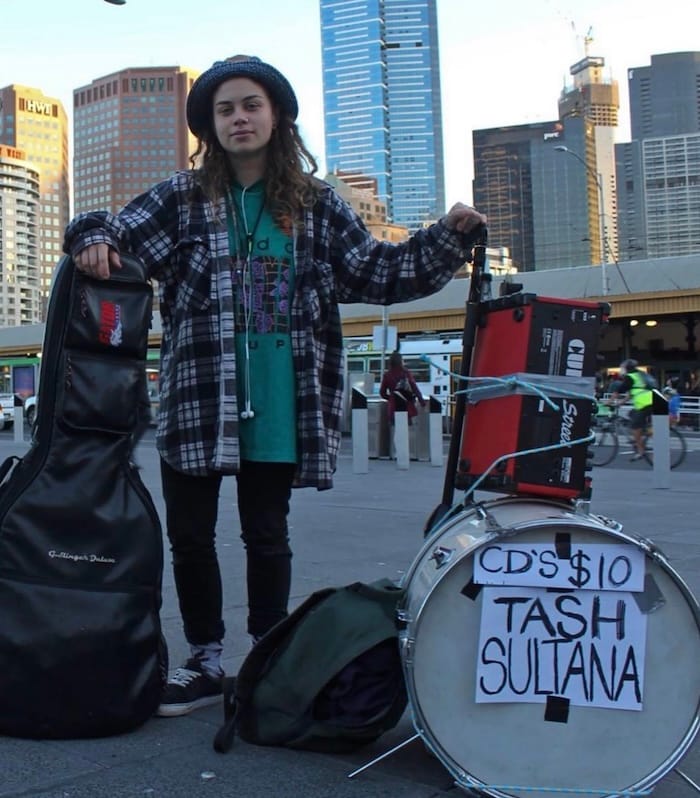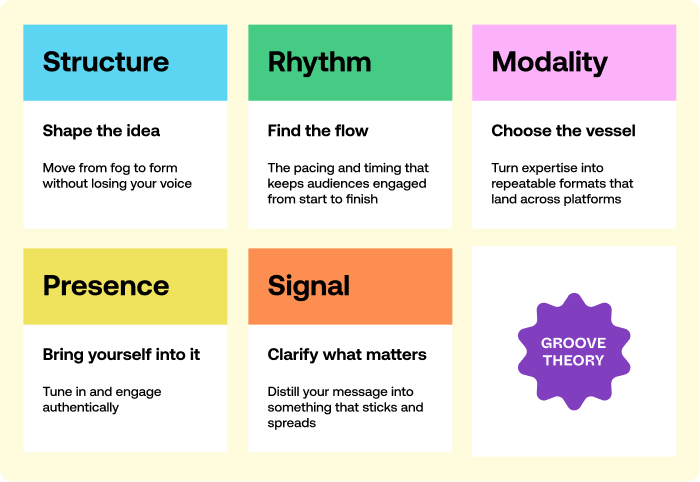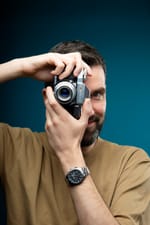Groove Theory #6 - The One Person Orchestra
I'm your host, Howard Gray, founder of Wavetable - where case studies become interactive games. Currently: spending many hours in Guatemala’s finest coffee shops, becoming NY<>LON
Melbourne, 2014. A busker sits cross-legged on the street, surrounded by pedals, guitars, and electronic gear. They're not just playing music - they're conducting an entire orchestra. Alone.
Loop pedal records the bass line. Drums get layered in. Guitar melody flows on top. Vocals weave through everything. Each element building on the last, creating something that sounds like five people but it's just one.
What started as street performance would become a blueprint for a new kind of artist.
This is Tash Sultana, and they now sell out arenas worldwide. But the approach hasn't changed. Still one person. Still building everything live, layer by layer.

Many artists scale by adding band members. Tash found a different path - perfecting rhythm.
The Tension
When you're a solo musician, you face the tyranny of subtraction. Bands can assign roles - drummer keeps time, bassist holds the groove, guitarist adds melody. But when it's just you, every element you add risks losing what you've already built. Every choice demands sacrifice.
You have to layer complexity without losing the essence.
Step Into It
You're finally launching your new creative venture. Friends and mentors ask about building a team - a marketing person, a developer, someone to handle operations. But you want to keep it lean, keep control, keep the feedback loop tight.
How do you build something substantial when you're the entire orchestra?
Figure out your rhythm, and you get complete creative control. Don't figure it out, and someone who has will eat your lunch.
The Groove: Rhythm
Rhythm → Find the flow
Tash Sultana discovered something crucial about working solo: rhythm isn't just about timing - it's about building.
"I do not play to a backing track," they explain. "I'm anti backing tracks." Instead, they build each song live, layer by layer, using loop pedals to capture and replay each element in real-time.
"Jungle", Tash's breakout song
Watch any Tash performance and you'll see the same principle at work. They don't rush between layers. Each element needs to lock in before the next one enters. There's a patience to the pacing that most people miss.
"Each loop has to feel right before I move to the next. If I rush it, everything falls apart."
Here's the thing: Tash isn't just playing music, they're managing tempo. Not just musical tempo - workflow tempo. They've figured out that when you're doing everything yourself, rushing kills everything. They're using:
- Loop pedals to capture and layer sounds
- Multiple guitars (acoustic, electric, slide)
- Live vocal effects and harmonizers
- Real-time mixing and arrangement decisions
They're conductor, sound engineer, and entire orchestra rolled into one. This is rhythm as operating system.
When you're the entire orchestra, rhythm becomes how you sequence your day, your projects, your energy. It's knowing when to push and when to let things breathe.
1. Build your foundation first
Before adding complexity, get your core rhythm locked in. For Tash, it's getting that first loop solid. For you, it might be morning journaling, a daily standup, or a particular tool you like to use. Everything else layers on top.
2. Tempo matters more than speed
Tash waits for each loop to feel solid before adding the next. When you're building solo, this might mean fully implementing one feature before adding another (hello, issues with vibe coding!), or getting one client relationship right before seeking ten more.
3. Know your loop length
Tash works in musical loops - usually 4, 8, or 16 bars. What's your equivalent? Daily rhythms? Weekly cycles? Project phases? Find your natural rhythm and work within it. (at Wavetable we work in 6 week cycles, split into 2 week sprints).
Rhythm is one of the five elements of Groove Theory. Learn more >

The Release
Working solo doesn't mean working chaotically. It means becoming the conductor of your own orchestra.
Tash Sultana proves that one person with clear rhythm can create something as rich and complex as any band.
And now, with AI tools handling more of the functional and technical layers, we're all becoming one-person orchestras in our fields. The question becomes less about whether you can do it all, and more about whether you can sequence it all.
The challenge is living in the gap between what you want to achieve, and where you are now.
We typically default to wanting more people, more resources, more runway. But sometimes, we just need better rhythm.
Next up: how an architect went from plucky upstart to international icon - inspired by the rules of improv comedy.
Any solo artist wisdom to share? Hit reply.
Howard
Extended Mix: Groove Inspirations
- Jacob Collier improv with The National Symphony Orchestra - surely the subject of a future edition of Groove Theory...
- Derek Sivers - "Anything you want" - how to grow a business without losing your soul (scroll down to access all the material)
- Reggie Watts TED Talk - comedy meets live looping
Ready to build the rhythm for your biggest moments?
Groove Build helps you turn your expertise into keynotes, workshops, and programs that actually land. Start with a single 1:1 session, or dive deeper.
No spam, no sharing to third party. Only you and me.

Member discussion